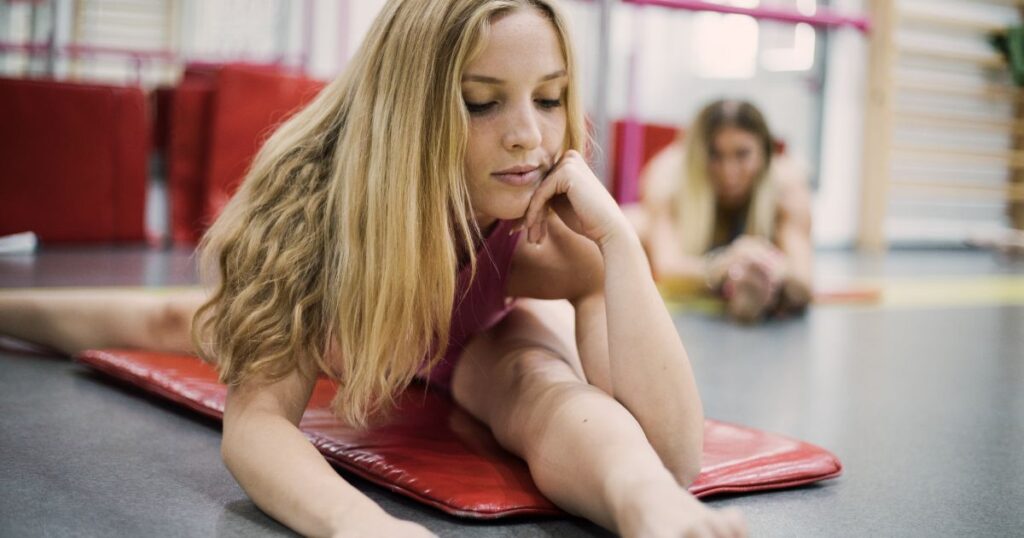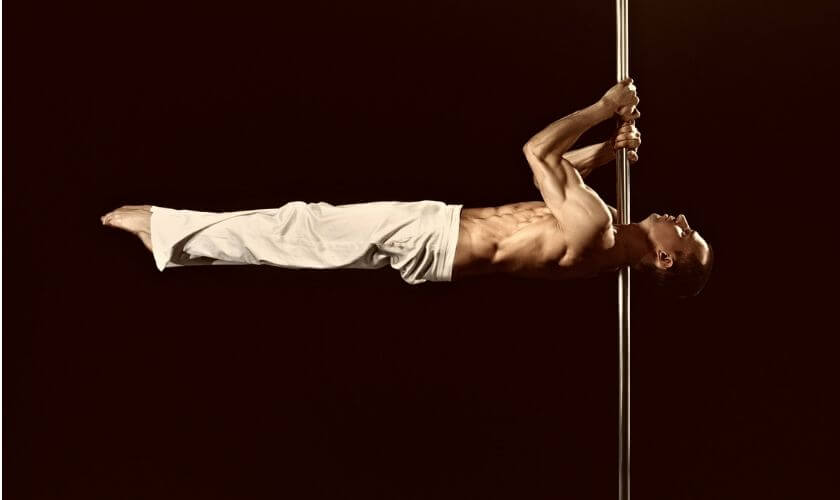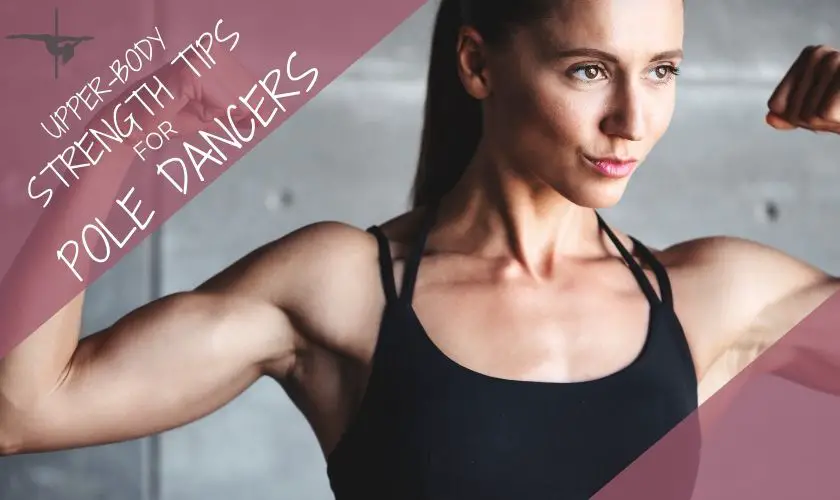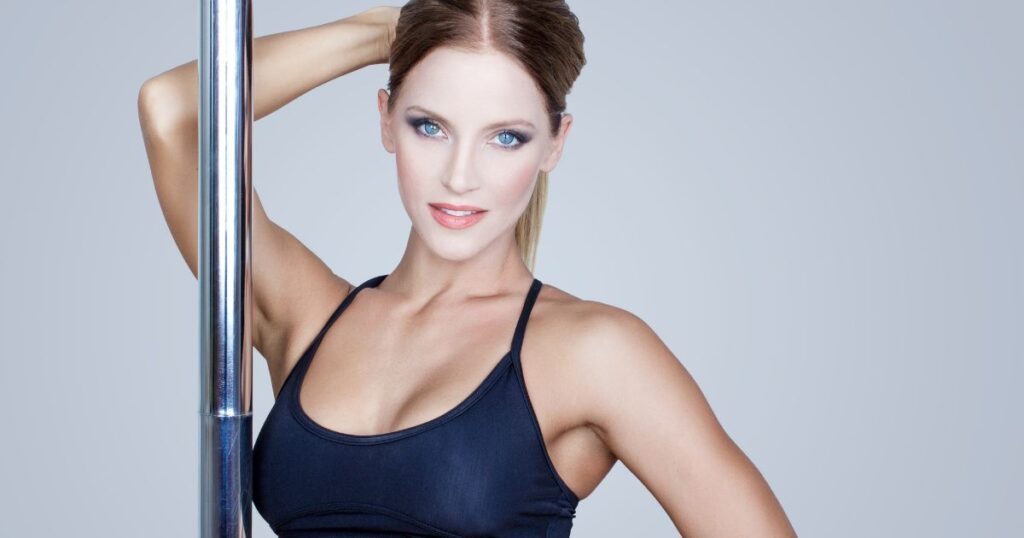If you’re new to pole dancing and you want to practice your new skills at home, you’re probably wondering if it’s possible to practice pole dancing without a pole?! Let’s explore this.
Of course you can’t actually perform real pole dancing without a pole, even if you’re the greatest mime in the world – you can’t defy gravity on its own! So, apart from joining in with street pole, what else can you do!?
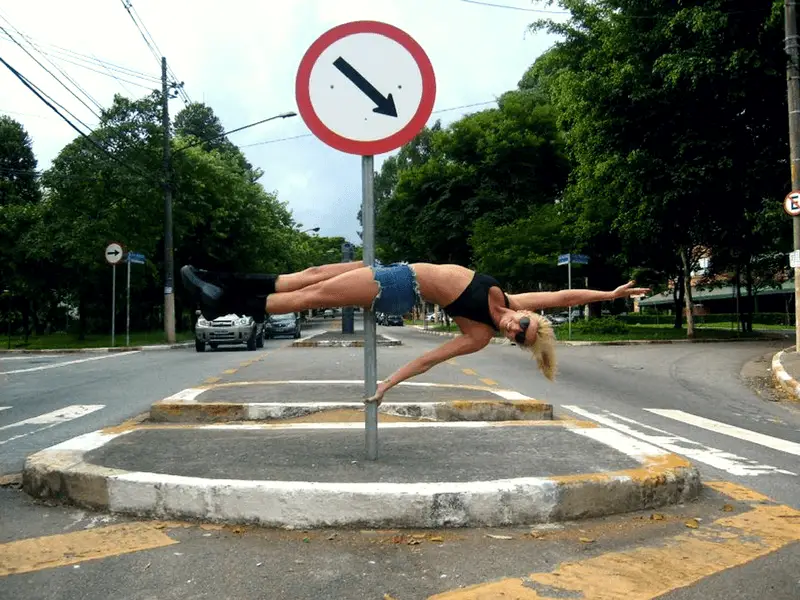
Pole dancing is a popular and effective form of exercise that can improve strength, flexibility, and overall fitness. It involves a wide range of movements and poses that work the entire body, including the arms, legs, core, and back.
To get started with pole dancing for fitness, you should first find a qualified instructor or studio that offers pole dance classes. In these classes, you will learn the basic skills and techniques needed to perform on the pole, as well as how to safely and effectively execute a wide range of movements and poses.
In your classes, you will also be guided through a series of exercises and stretches designed to improve your strength, flexibility, grip and control.
Many of these exercises can be performed both on and off the pole, and can help you to develop the muscles and skills needed to perform more advanced tricks and transitions.
In addition to attending classes, you can also practice pole dancing at home to improve your fitness and skills. You can try basic exercises and stretches on your own, or you can follow along with instructional videos or DVDs to learn new moves and routines.
Want to become an amazing pole dancer?
Open Dance Academy has over 450 online lessons, by some world famous pole dancing champions! Join now to get:
***GET 10% OFF OPEN DANCE ACADEMY***
Use the code polefitfreedom to get 10% off Pole Dancing Lessons with Open Dance Academy. This is an exclusive offer for readers of this blog!
Get Started Pole Dancing At Home Without A Pole
OK, hear me out – there are so many workouts you can do at home that mimic tricks you do on the pole.
Performing these workouts with alternative apparatus you have around the house can help massively by conditioning your muscles for pole dancing.
Pole Dance Conditioning: Floor Work
Floorwork is a vital part of any pole dance routine. All pole dance tricks and combos start and finish from… you’ve guessed it… the floor!
What you actually do on the floor adds to the finesse and grace of your routine. Starting and finishing a trick badly undermines the actual trick itself.
Also, what do you do in between your impressive pole tricks and combos to catch your breathe? Floor work – that’s what!
Floorwork is a term used to refer to movements and poses performed on the ground, rather than on the pole.
Some examples of floorwork that you can do at home without a pole include:
- Rollovers: This is a basic floorwork move that involves rolling your body over the ground, using your arms and legs for support and momentum. Rollovers can be performed in various directions, and can be used as a transition between other moves or as part of a choreographed routine.
- Splits: This is a common floorwork move that involves extending one leg straight out in front of you, while keeping the other leg bent and close to your body. Splits can be performed in various directions and variations, and can be used to add flexibility and grace to your pole dancing routine.
- Floorwork spins: This is a move that involves spinning your body on the ground, using your arms and legs for support and momentum. Floorwork spins can be performed in various directions and combinations, and can be used to add variety and dynamic movement to your routine.
- Clock legs: Clock legs is a term used in pole dancing to refer to a move where the dancer moves their legs in a circular pattern, resembling the hands of a clock. To perform clock legs, the dancer stands in front of the pole with their arms extended, and begins by moving one leg in a circular pattern, starting at the 12 o’clock position and moving clockwise to the 6 o’clock position. The other leg is then moved in a similar pattern, starting at the 6 o’clock position and moving counter-clockwise to the 12 o’clock position.
Floorwork involves versatile and challenging move that requires a high level of strength, flexibility, and control. You can use floorwork as a transition between other moves, or as part of a choreographed routine.
Overall, floorwork is an important part of pole dancing, and can add variety, grace, and creativity to your routines. With practice and dedication, you can master a wide range of floorwork moves and incorporate them into your pole dancing practice.
Building Upper Body Strength
Upper body strength is one of the most important overall skills needed when pole dancing.
To build upper body strength at home without any equipment, you can try a series of bodyweight exercises that target the muscles in your arms, shoulders, and chest.
Here are some exercises that are simple to do at home without any equipment. All of these exercises use your own body weight for resistance, which is also the most affordable (and effective) way to build strength.
- Traditional Push-ups: Push-ups are a classic exercise that work the muscles in your chest, shoulders, and arms. To perform a push-up, start in a plank position with your hands shoulder-width apart and your feet together. Lower your body down towards the ground, keeping your core engaged and your body in a straight line. Then, push back up to the starting position. You can perform the push-up on your knees instead of your feet if you’re not yet strong enough
- Tricep Dips: Dips are a bodyweight exercise that work the muscles in your triceps and shoulders. To perform dips, find a sturdy chair or bench and place your hands on the edge, with your arms extended and your feet on the ground. Lower your body down towards the ground, keeping your elbows close to your sides. Then, push back up to the starting position.
- Plank: The plank is a bodyweight exercise that works the muscles in your core, shoulders, and arms. To perform a plank, start in a push-up position with your hands shoulder-width apart and your feet together. Hold this position for 30 seconds to 1 minute, keeping your core engaged and your body in a straight line.
All of these bodyweight exercises are a great way to build upper body strength at home without any equipment.
Conditioning Your Grip Strength
After just one pole dancing class, you’ll have already realized how important it is to have strong grip as a pole dancer.
Even if you’re not a pole dancer or workout enthusiast, it’s beneficial in your day-to-day life to have good grip strength. If you notice any of these signs or symptoms, this means that your grip is weakening and you should aim to improve it:
- You struggle to hold pole poses for more than a few seconds or your hands slip a lot – this is a classic sign that your grip strength needs work. If grip aid products are not helping you then it may be that its your hand strength that is lacking.
- Your hands ache a lot after carrying bags or other items – if you notice that your hands are aching much more than usual, this is another sign that the muscles in your hand could do with a good stretch and strengthening session.
- You notice that you get hand cramp even when you’re not doing anything particularly strenuous – this is sure fire a sign that you need to improve your grip strength. You should not notice cramps in your hands, wrists or fingers, but if you do – consider a grip strengthening routine to see if this helps in the first instance.
Working On Your Flexibility
Flexibility is so important for pole dancers. Performers are able to bend and contort their bodies into wonderful shapes because they work hard to improve their flexibility.
Anyone can do this from home. It’s possible to perform a deep V-stretch while sitting watching TV!
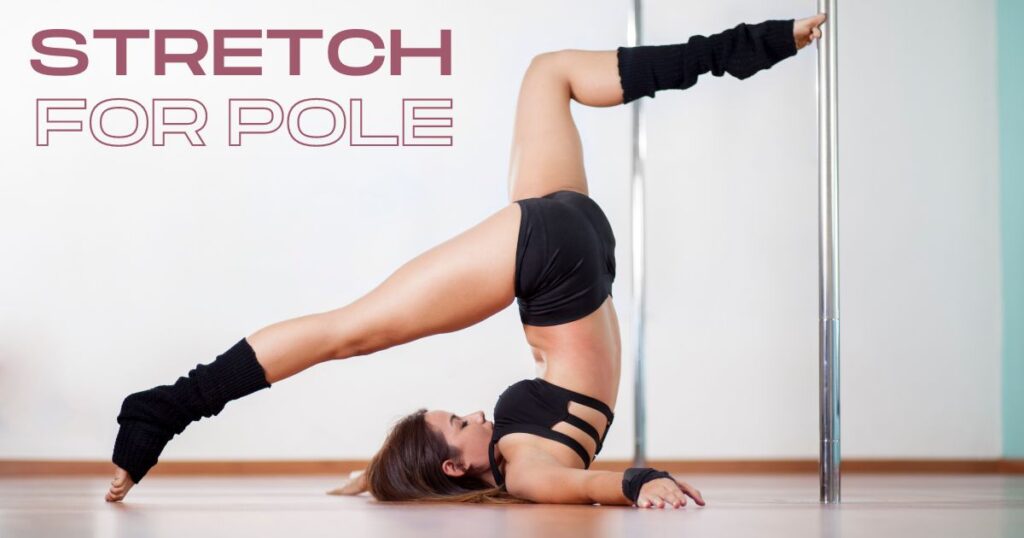
Working on your flexibility is an important part of being a successful pole dancer without strains or injuries. By incorporating flexibility training into your routine, you can improve your performance, reduce your risk of injury, and build strength and control on the pole.
Conditioning Your Body With Yoga
Yoga is extremely simple to start practising at home. All you need is some quiet space and a yoga mat. Yoga is a wonderfully complimentary sport to pole fitness and many pole enthusiasts also practice yoga as part of their training routine.
Start by creating a dedicated space for your yoga practice. Choose a quiet and peaceful area in your home where you can set up your yoga mat and any other equipment you may need, such as blocks or straps.
You will also want a clean yoga mat, a comfortable outfit, a towel or blanket for support, and any props you may want to use, such as blocks or straps.
There are lots of online resources to help you find your flow with yoga, including instructional videos and tutorials.
They can guide you through a yoga class or sequence. You can also use a yoga app or book to provide guidance and support for your practice.
Begin your practice by taking some time to settle in and prepare your body and mind for yoga. This can include a few minutes of deep breathing and relaxation, as well as some basic stretches to warm up your muscles.
Take breaks as needed, and listen to your body throughout your practice.
Chair Dancing
Using a chair as a dance pro is equally sexy and exotic as pole dancing, when performed well!
Chair dancing at home can help to prepare your body and condition your muscles for tricks and spins that you will do on the pole.
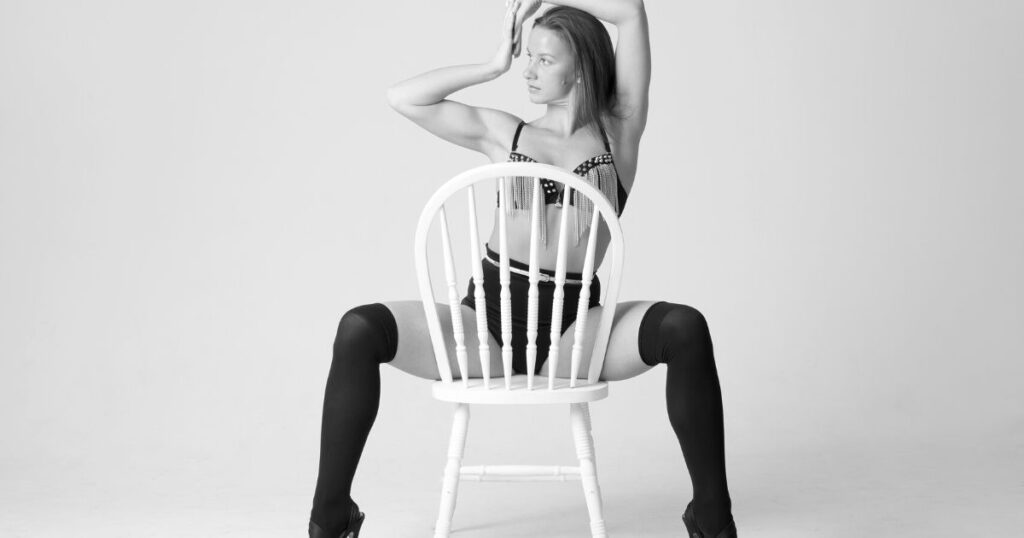
Start by choosing a sturdy chair that is suitable for dancing. Look for a chair with a strong and stable base, and make sure that it is not too slippery or wobbly.
Position the chair in a safe and spacious area, away from any obstacles or hazards. Make sure you have enough room to move around the chair and perform your dance without bumping into anything.
Use the chair as a prop and support, rather than a dance partner. Remember that the chair is there to provide stability and support, rather than to interact with you in a dance.
Practice basic chair dance moves, such as spins and turns, to get comfortable with the chair and develop your coordination and balance.
Consider how you can incorporate chair dance moves into your pole dance routines to add variety and creativity to your performances.
You could try using the chair as a prop alongside the pole, using it for your transitions and poses, or even by using it as a platform for more advanced moves.
Specific Poses You Can Do Without a Pole
Did you know that there are specific yoga and gymnastic tricks you can do at home without a pole that are extremely similar to tricks you’ll do on the pole!?
Here are some examples:
Shoulder Stands
A shoulder stand bares very close resemblance to a shoulder mount in pole dancing.
You can’t simply jump straight into a trick like a shoulder mount. It takes conditioning, planning and preparation, both on and off the pole before attempting a shoulder mount. As with any advanced pole trick, you need to work towards it.
Practising shoulder stands at home is a great way to get familiar with inverting your body for pole dancing.
To perform a shoulder stand correctly, start by lying completely flat on your back and keep your legs straight in front of you. Keep your arms straight by your side.
Do not try to lift your head or neck up at all.
Raise your legs off the group until your toes are pointing at the ceiling. Then, slowly raise your butt and lower back off the ground until you’re balancing on your shoulders.
It can take some practice and coordination to find the right position for you balance. Just be careful not to raise your head or neck off the floor! If you find it difficult to balance, place your hands on your butt cheeks to support yourself, but don’t rely on them too much.
It really helps if you have your phone camera ready and balanced somewhere to make a video of yourself doing a shoulder stand so you can see if your body is in a straight line or not.
Once you can manage a full shoulder stand, try to hold it for as long as you can – this will strengthen your shoulders, helping you prepare for a shoulder mount.
Also, try to hold your legs in different positions:
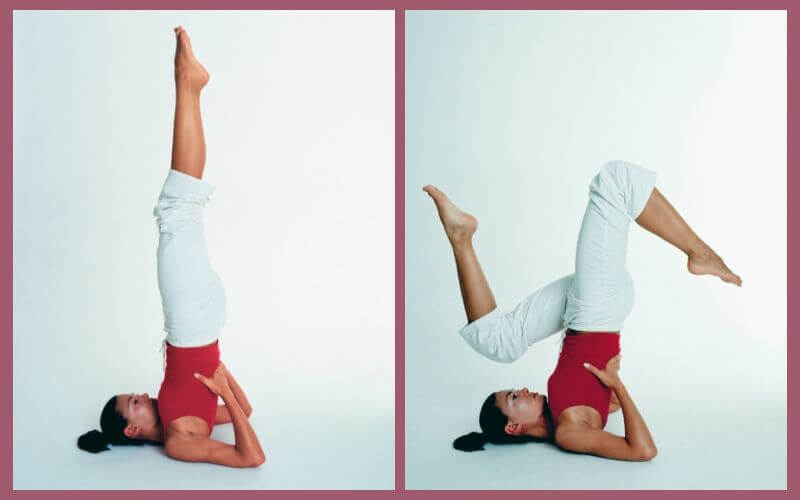
Handstands Against The Wall
Performing a handstand against the pole is a trick you’ll be learning as a beginner-intermediate pole dancer!
Why not get ahead on this by practising handstands against a wall or doorframe?
Get started by learning how to do a handstand against the wall by following these steps:
- Find a clear and spacious area with a wall that is free from obstacles and hazards. Make sure you have enough room to move around and practice your handstand without bumping into anything. Ensure there are no pictures, mirrors, hooks or nails on the wall and be aware of your shoes – you don’t want to kick holes in your drywall!
- Warm up your body with some basic stretches and exercises, such as lunges and arm swings. This will help to prepare your muscles and joints for the handstand, and reduce the risk of injury. It’s so important that you warm up your muscles before attempting something like a handstand.
- Practice kicking up into a handstand position against the wall. To do this, start by facing the wall and placing your hands on the ground, shoulder-width apart. Then, kick your legs up into the air, using the wall for support and balance.
- Hold the handstand position for as long as you can, focusing on your alignment and balance. Keep your body in a straight line, with your shoulders over your hands and your core engaged. Use your phone’s camera to record videos of your practice so you can see where you need to improve. This works even better if you have a slow-motion camera with a high FPS rate.
- Gradually increase the amount of time you spend in the handstand position, as well as the distance you move away from the wall. As you become more comfortable and confident, you can try to do handstands without the wall for support.
Overall, learning how to do a handstand against the wall is a challenging but rewarding skill that can improve your strength, balance, and coordination as a pole dancer.
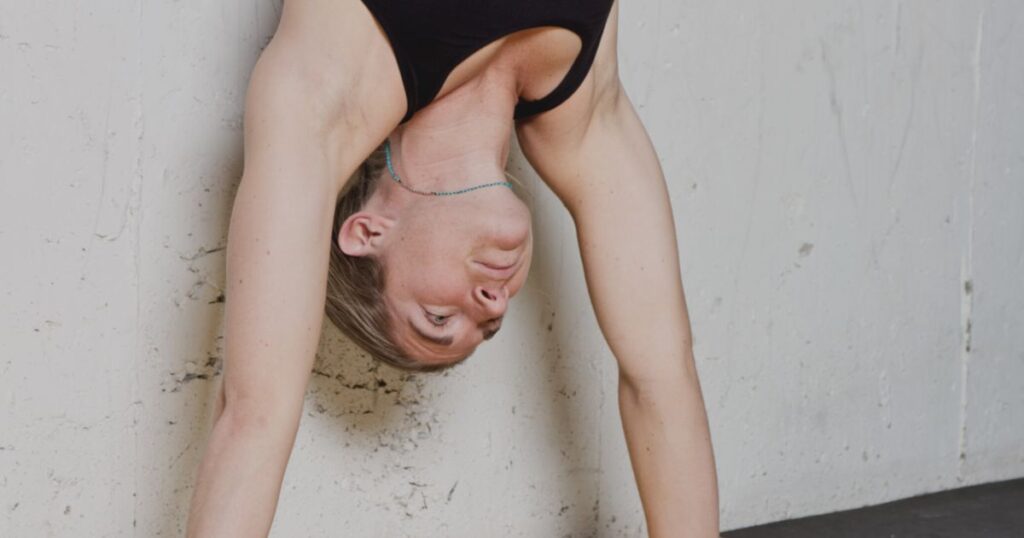
Back Bends
A backbend is a beautiful and sexy move that can be practised without a pole.
Start by practicing basic backbend yoga poses, such as cobra and bridge. To do this, lie on your stomach and place your hands under your shoulders. Then, press down into your hands and lift your chest and hips off the ground, arching your back and opening your chest.
Hold the backbend pose for as long as you can, focusing on your alignment and breath. Keep your core engaged and your hips and legs on the ground, and breathe deeply as you stretch and open your chest.
Gradually increase the intensity and duration of your backbend practice, trying more advanced poses and variations. As you become more comfortable and confident, you can try to incorporate backbends into your yoga or fitness routine.
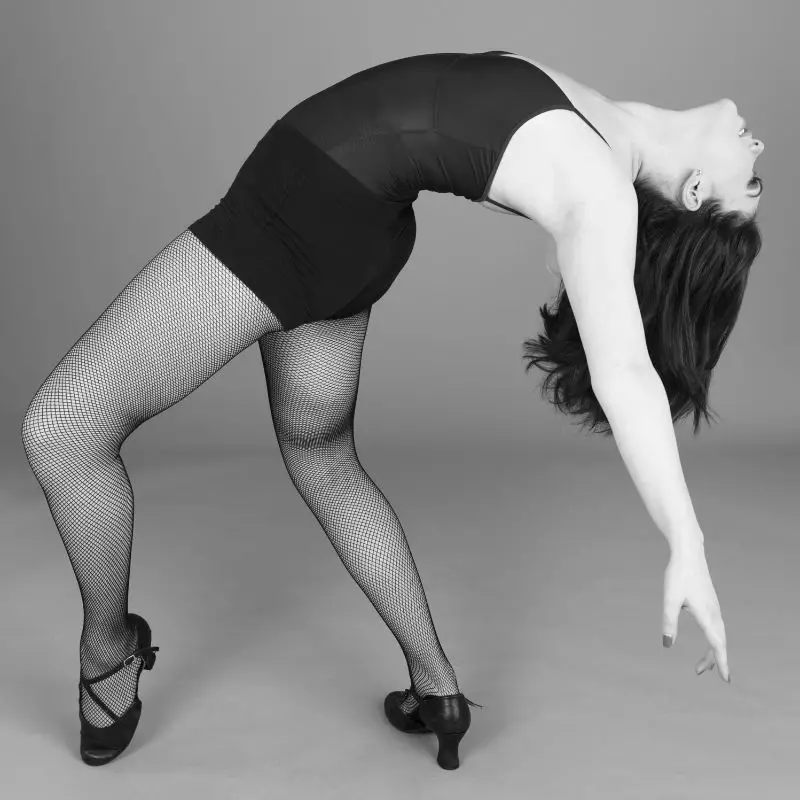
Consider Installing Your Own Dance Pole
Installing your own dance pole is not as complicated as it may sound. Did you know that modern pole dancing poles don’t need any drills or ladders at all and they’re also completely removable!?
It’s so beneficial as a pole dancer to have a pole set up at home so you can practice at anytime in your own comfortable environment.
I invested in my first pole after my 5th pole dancing class. Like many others, I just knew that this was going to become more than hobby.

We have tonnes of articles and guides to help you choose your own dance pole to use at home:
- Best Dance Poles for Home Use
- Freestanding Dance Poles You Can Use Anywhere
- What are Pole Dancing Poles Made From?
- Pole Dancing at Home: The Safety Guide
- X Pole XPERT Review: The Ultimate Home Dance Pole
- How to Install a Dance Pole At Home
- Installing a Dance Pole with a Popcorn Ceiling: What You Need to Know
- Best Pole Dancing Crash Mats
- How to Learn Pole Dancing From Home
Conclusion
Pole dancing without a pole is a fun and challenging way to practice and improve your skills as a pole dancer. With a little creativity and imagination, you can workout at home in such a way that mimics what you do in pole dancing class, and also develop a wide range of techniques and movements that can enhance your performance and enjoyment of pole dancing.
So, if you don’t have access to a pole, or if you just want to try something new and different, give these workouts a try, and see how they can enhance your dancing and fitness practice.

